Posted by Derek Champoux
5 years ago / February 5, 2020
Cannabinoids Explained: Cannabis 101
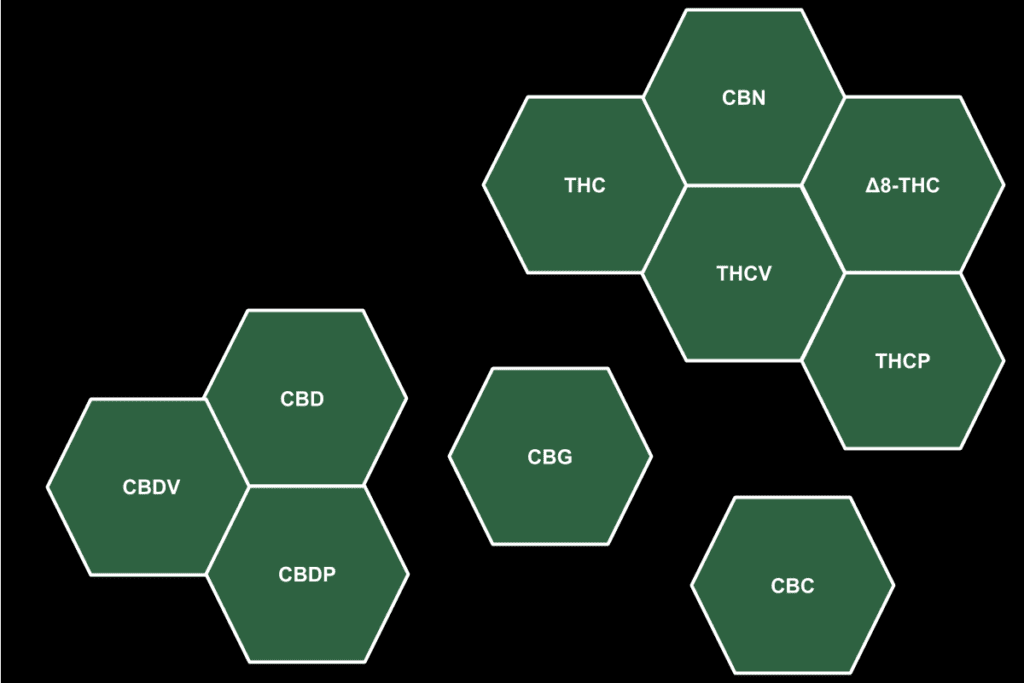

Cannabinoids are compounds found in cannabis that interact with the endocannabinoid systems in our bodies. These systems regulate functions and processes like sleep, mood, memory, and appetite.
Scientists have discovered more than 100 cannabinoids in cannabis, and each has a different effect on our endocannabinoid systems.
How Cannabinoids Affect Your Vaping Experience
Cannabinoids affect the way you experience cannabis, regardless of your method of consumption. Their effects, however, are especially pronounced when using cannabis vape pens. Studies have shown that vaping cannabis often produces more potent effects in users than what it is smoked. This appears to especially be the case for infrequent cannabis users.
The cannabinoids and concentrations present in your vape pen vary depending on the strain and extraction. Most commonly, when purchasing vape pens or other cannabis products, the two cannabinoids referenced are △9-THC and CBD. The higher the ratio of △9-THC:CBD, the greater the concentration’s psychoactive effects. Higher ratios of CBD: △9-THC, on the other hand, generally have more calming, therapeutic effects.
The distinction between CBD and △9-THC is important for cannabis users to understand, but it only barely scratches the surface of what cannabinoids are and the effects they have on users when consumed. A deeper understanding of these chemical compounds can help consumers get the most out of their vaping experiences. To help, we’ve prepared a mini crash course on some of the most well-known cannabinoids.
Cannabinoids 101
The growing legalization of cannabis across the globe is leading to more cannabis studies and increased funding for research. As a result, our current knowledge of cannabis, cannabinoids, and their benefits is blossoming. Let’s begin by taking a look at CBN, a non-psychoactive cannabinoid that has burst onto the scene in recent months due to its purported wide-ranging therapeutic benefits.
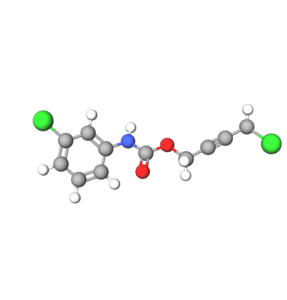
CBN
Cannabinol (CBN) forms via the oxidation of △9-THC, a process that takes a considerable amount of time. High amounts of CBN are seldom found in fresh dried cannabis flower, as the △9-THC in these buds have not yet had the opportunity to oxidize. Higher concentrations of CBN are more commonly found in cannabis that has had time to age.
For decades, cannabis consumers generally avoided older, dried out cannabis in favor of fresher, more potent flower. But we’re starting to see a new perspective toward aged cannabis among more informed cannabis consumers, given the growing demand for the cannabinoid and any products containing it.
Researchers have confirmed CBN to possess antibacterial, anti-inflammatory, neuroprotectant, and appetite boosting properties. But the characteristic that most people associate with CBN—its super-sedative effect—is yet to be corroborated. Few studies have been conducted on the cannabinoid’s sedative qualities and the limited amount of empirical evidence derived from these studies actually show that the sedation attributed to CBN is more likely a combination of △9-THC, CBN, and a host of terpenes ingested together. This interplay of cannabinoids and terpenes is known as “the entourage effect”.
Vaping CBN
Boiling point: 185°C (365℉)
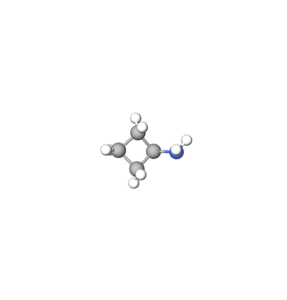
CBG
Originally discovered in the ‘60s, cannabigerol (CBG) remains one of the most expensive cannabinoids to produce. This is because most cannabis strains do not contain much CBG. As cannabis grows, CBG, like △9-THC and CBD, is formed from the plant’s parent molecule, cannabigerolic acid (CBGa). Almost all of this CBGa is converted into △9-THC and CBD, leaving only trace amounts of CBG in most cannabis strains. For decades, its scarcity caused consumers and researchers to overlook CBG and classify it as a minor cannabinoid.
But in recent years that mentality has shifted, and we are now seeing more strains than ever with higher concentrations of the cannabinoid. This is likely due to the discovery that CBG produces a bevy of significant health benefits.
In addition to possessing confirmed antibacterial properties, CBG also combats inflammation, muscle contractions and spasms, and nerve and brain cell degeneration. It has also shown promising antitumor characteristics in high-throughput screening tests!
Vaping CBG
Vaping cannabigerol is done at a significantly lower temperature than most other cannabinoids.
Boiling point: 105°C (220℉)
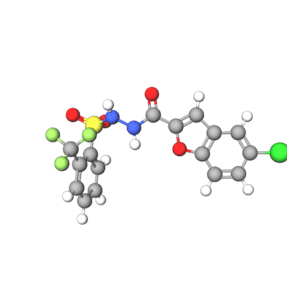
CBC
Cannabichromene (CBC) is a non-psychoactive cannabinoid found in low quantities in most cannabis strains. Like △9-THC and CBD, it is also formed during cannabis’s growth stage from CBGa.
The effects of CBC, by itself, are not very pronounced. But CBC does play a crucial role in the entourage effect, working synergistically with terpenes and other cannabinoids. When ingested alongside cannabis’s other chemical compounds, CBC can help to relieve depression, combat nerve and brain cell degeneration, and even reduce acne. Some studies have even shown that when ingested with other cannabinoids and terpenes, CBC can even help to fight breast cancer.
There is still plenty to learn about this promising and relatively unknown cannabinoid. Who knows what other fascinating things we’ll learn about CBC going forward?
Vaping CBC
Boiling point: 220°C (428℉)
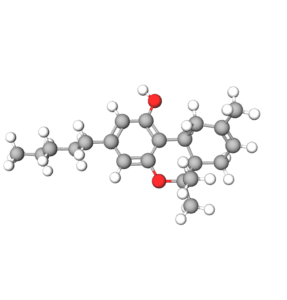
△8-THC
When most users speak of THC, they are generally referring to △9-THC: cannabis’s most prevalent cannabinoid and the one primarily responsible for its psychoactive effects. But △9-THC isn’t the only type of THC in cannabis; far from it, actually.
△9-THC gets its name for having a double bond (two-ring structure) on its ninth carbon atom. Other types of THC have this double bond elsewhere: △1-THC has a two-ring structure on its first carbon atom; △2-THC has two rings on its second carbon atom; △3-THC has two rings on its third; et cetera. But only one other △-THC variant has psychoactive properties similar to △9-THC. It’s called △8-THC and has a double bond on its—you guessed it—eighth carbon atom!
Not much research has been done on △8-THC, but what we do know is that the effects of the psychoactive compound are less potent than those of △9-THC and have slower onset periods. △8-THC is also not nearly as abundant in cannabis as △9-THC and is believed to curb nausea, reduce anxiety, stimulate appetites and even possibly inhibit tumor growth when consumed.
Vaping △8-THC
△8-THC has a little higher of a boiling point than THC (157°C/314.6℉).
Boiling point: 175-178°C (347-352℉)
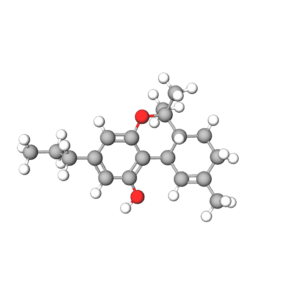
THCV
Tetrahydrocannabivarin (THCV) is another member of the THC family, albeit one without a double bond on any carbon atom. It, too, is psychoactive and is known to produce shorter, clearer, and more energetic highs than △9-THC. When THCV and △9-THC are consumed together, users report experiencing more intense and potent highs than those produced by consuming △9-THC on its own.
THCV also produces a wide range of beneficial health effects. The cannabinoid is known to reduce anxiety, increase our resiliencies to spasms and seizures, suppress appetites, protect nerve and brain cells, promote bone growth and regulate blood sugar.
Vaping THCV
Boiling point: 220°C (428℉)
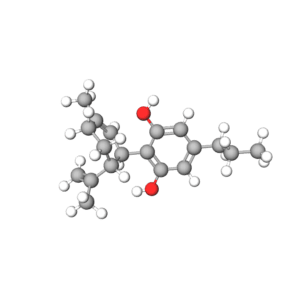
CBDV
On a molecular level, cannabidivarin (CBDV) is structurally similar to CBD; in fact, the two non-psychoactive compounds are often linked but their effects are altogether different.
Research suggests that CBDV is more potent than CBD and may even be more effective in treating epilepsy. CBDV is also suspected to curb nausea and promote bone growth and development. Unfortunately, not been many studies have been conducted on CBDV and its effects, but we do expect to learn more about the mysterious compound as the global legalization of cannabis continues, opening both doors and wallets to more funding for research.
Vaping CBDV
Boiling point: 165°C (329℉)
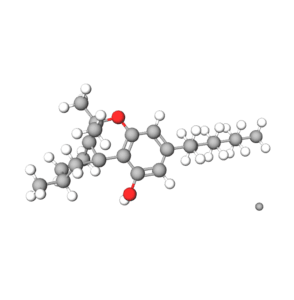
THCP
Tetrahydrocannibiphorol (THCP) is one of two cannabinoids discovered in the last three months. The cannabinoid binds extremely efficiently to our bodies’ CB1 and CB2 receptors, resulting in increased potencies. In fact, some studies suggest that the cannabinoid is exponentially more potent than △9-THC.
The potential medical benefits of this newly discovered cannabinoid are still unknown. Scientists have only begun to scratch the surface of what we know about it, but the current working theory is that cannabis’s dynamically different psychotropic effects are due to THCP levels, and they had previously gone undetected. We’re sure that further research will produce further insight into the compound’s medical and pharmacological benefits.
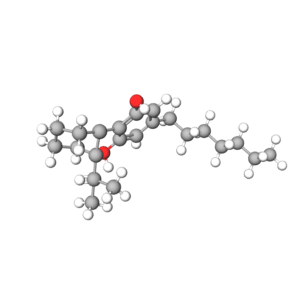
CBDP
Cannabidiphorol (CBDP), is the other cannabinoid that was discovered in the last three months. Like THCP, non-psychoactive CBDP binds extremely effectively to our bodies’ CB1 and CB2 receptors, meaning that it could deliver more potent calming and therapeutic effects than those produced by CBD in a more expedient and efficient manner.
Aside from the enhanced binding ability, CBDP appears to be a very similar CDB analog. As such, it seems likely that it will offer similar medical benefits such as CBD’s anti-inflammatory properties.
Cannabinoids Are Only Part of the Picture
Cannabinoids have a major impact on how we experience cannabis, yet they are only part of the picture. Taste, highs, medical benefits, and effects are affected by a variety of cannabis compounds, including terpenes and flavonoids, all working together in cannabis’s entourage effect.
The Best Cannabinoid Vape Pens
Understanding cannabinoids can help you get the most out of your cannabis vaping experience. Equally important is the selection of a vape pen that will activate these cannabinoids without burning them. Greentank manufactures premium vape pens that are designed to account for the various boiling points of cannabis, delivering smooth, full flavor with every draw. Contact us today for bulk vape pen quotes and information.
Filed Under:
Interested in our products?
Contact us to find out how you can carry the most reliable vape hardware solutions on the market.
General Requests
Logistics
